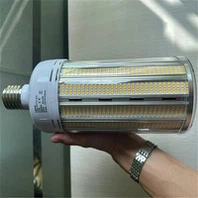Light Sensor: What is a Light Sensor?
What's the definition of sensor bulb
A form of photodetector that detects light is a light sensor, also known as a photosensor. To measure illuminance, react to variations in the quantity of light received, or transform light into electricity, various kinds of light sensors can be used.
What kinds of light monitors are there?
Photodiodes, photoresistors, phototransistors, and solar light sensors are typical varieties of light sensors. These parts can be applied in projects like mobile light sensing, automated exterior illumination, proximity sensors, and renewable energy.
Light is converted into an electrical charge by photodiodes. Similar to typical diodes, they are p-n junction devices. A p-type semiconducting substance and an n-type semiconducting material make up a p-n junction mechanism. Due to a surplus of electron holes in the substance, the "p" stands for "positive," and the "n" stands for "negative," due to an excess of electrons.
This implies that there is only one way in which current can travel through the boundary. These electron hole pairs develop in a photodiode when the light's energy is captured by the component. Avalanche photodiode is another word that is similar.
The resistance of photoresistors, also referred to as light-dependent resistors or LDRs, decreases proportionately to the quantity of light received. Conductivity rises as electron hole pairs are formed by light, which causes impedance to fall.
Similar to normal transistors, phototransistors switch or enhance impulses, with the current applied to the terminals being produced by exposure to light. Energy gathering is the process of turning light into power using photovoltaic (or solar) cells. Through the semiconducting components of the cell's photovoltaic effect, voltage and electric current are produced.
How do light detectors function?
The photoelectric effect is how light detectors function. Light has the ability to act like a photon, a type of particle. The energy of the light is taken by the electrons when a photon strikes the metal surface of the light sensor, boosting their kinetic energy and enabling them to be released from the substance.
Electrical current is the result of the atoms' motion and, consequently, of charge. In that light is captured by electrons, elevating their energy level, the photovoltaic effect is comparable to the photoelectric effect. The electrons are entirely expelled from the substance in the photoelectric effect. The electrons in the photovoltaic effect are energized from the valence band into the conduction band while still being contained in the same substance.







